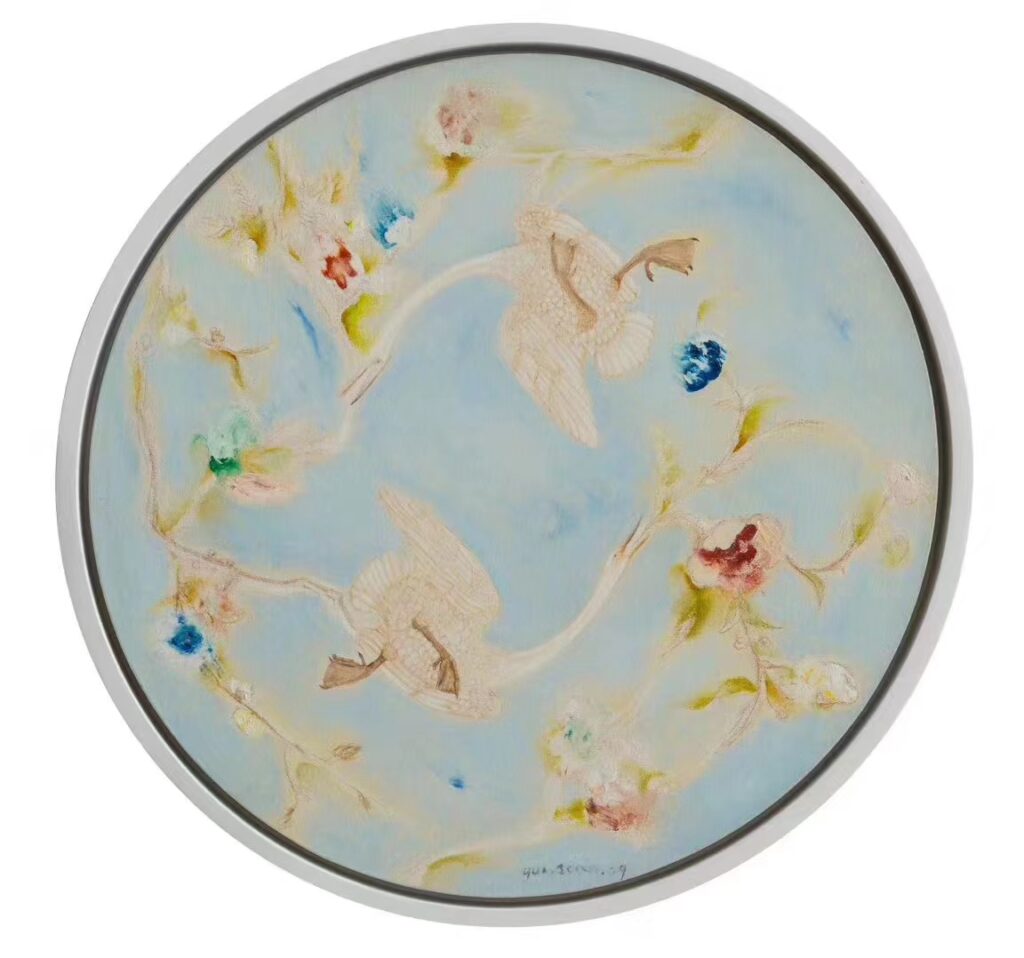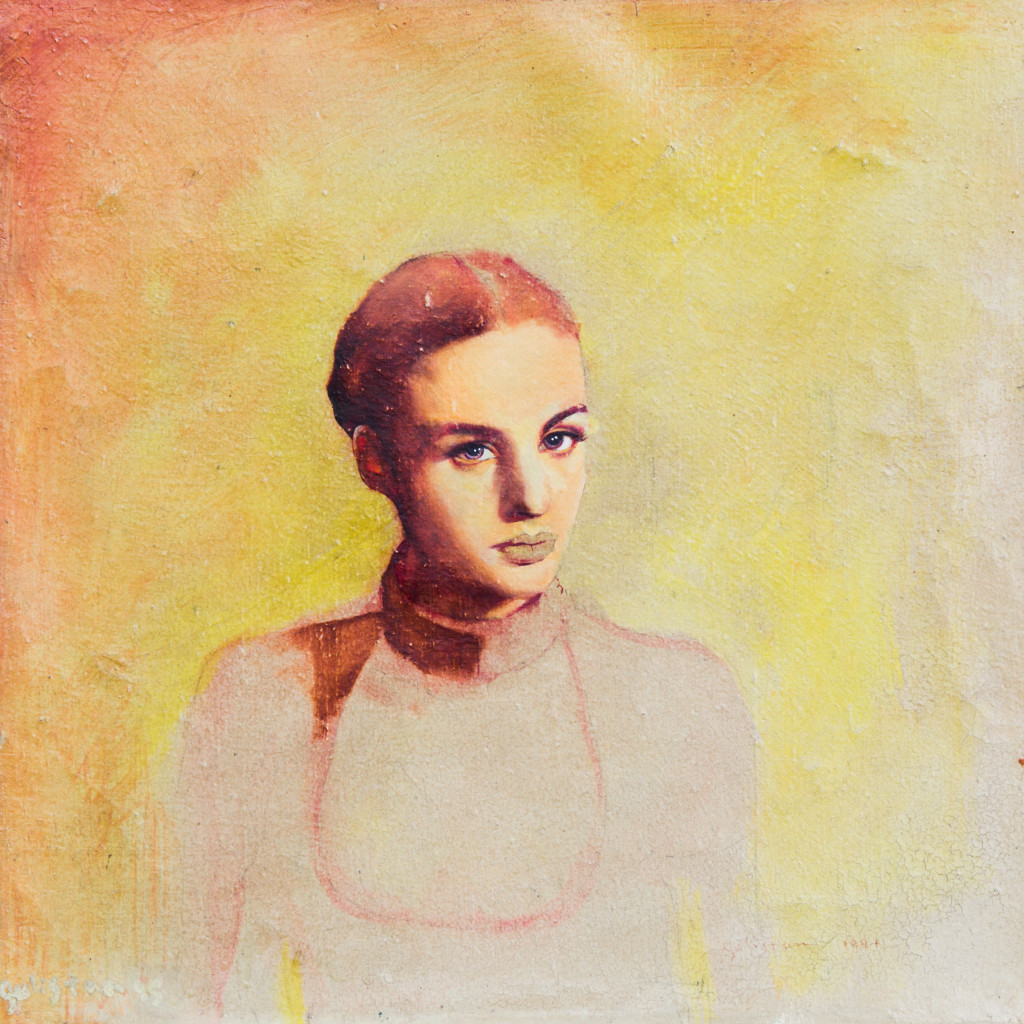Memory of the portrait-Gaze
Michelle Mope Andersson, D.Min.
Tales of time I
So it is a great pleasure to be in Gulistan’s studio today, to introduce some of her works. I’d like to talk a little bit about how I first came in contact with Gulistan and what really struck me about her work. The first thing I think that moved me very deeply was the gaze. The way that the characters in Gulistan’s work seem to be looking back in time and ahead in the future as well. And as I get to know Gulistan a bit better I learn about her story, I learn about the characters in her life, her mother and her father, friends that she has met along her journey. And I realize that gaze actually is something that comes, maybe even from her early childhood, learning from her mother. The way that we learn from our mothers. The beautiful things that are passed from generation to generation. Gulistan captures the gaze of her mother and father. In the image of the young children that are gazing back in time and looking forward with hope. And it’s that aspect of hope that touches me very deeply, especially in these times. That we need to be looking always for the good. And in the gaze of the children, and in the gaze of each of these magnificent images that Gulistan creates for us, I see a glimmer of hope, I see a glimmer of hope in the eyes that look back in time and ahead in time at once.
Memory of portrait- The Age of Innocence I
This is absolutely my favorite piece of Gulistan’s works. It’s the cranes. And these cranes are up in heaven, they’re up in the sky. Now, if I had this piece myself and my own collection, I would absolutely put it on the ceiling, because it reminds me of the domes of the great cathedrals in Rome, some of my favorite places. And you know the crane is so important because the crane very often is the symbol of eternity, it’s feet are touching the earth usually, and its beak is reaching for heaven. And yet these cranes are in flight, they’re in the heavens, they’re above us, they’re looking down on us with the kind of superior wisdom and look how joyous they are, they’re full of hope, they’re full of beautiful colors and it’s as if they are carrying these stalks with them in their beaks. These sort of messenger stalks, like we see in the great baroque paintings you know, Joseph carrying his stalk, Moses carrying his stalk and here the cranes are carrying the stalk as messengers, messengers of are goodness, messengers of the good.
Memory of the portrait – Gaze
Gulistan once told me that what she learned from her mother is to always look for goodness, to look for beauty and that’s what Gulistan finds and presents to us, in her works of art. Deeply meaningful for me also is the connection of Gulistan’s work to the Kang Xi, the Yong Zheng and the Qian Long emperor. So I see in Gulistan’s works, these magnificent robes and vestments that we saw in the 1700s in the imperial palace. And I also see the kind of journey, the travel moving along the silk road, which is what Gulistan’s work is all about. It’s that connection, binding that connection between east and west, west and east, building a bridge carrying a message. So the meeting of the colors and the flow of these colors tells us about a journey, it tells us about Gulistan’s own journey as an artist, as I stand here in her gallery. I see one of group Gulistan’s her examination piece, in fact, which she first painted to move into the world of art so many years ago. And then she brings all of those magnificent skills, those skills are great detail. And she puts them into the background, that is also something is very unique about Gulistan’s work. The background in many cases is more important than the subject itself. Where she places the characters, not necessarily what they are doing, but where and how they are placed. So again, the children placed on the journey, the way the paths that they’re following and the special clothing that they’re wearing. This is also for me very evocative of the golden era. It’s also, I know, I see a bit of Gustav Klimt in these paintings, again, connecting us through time with color, with temperature, with warmth, with vitality.


